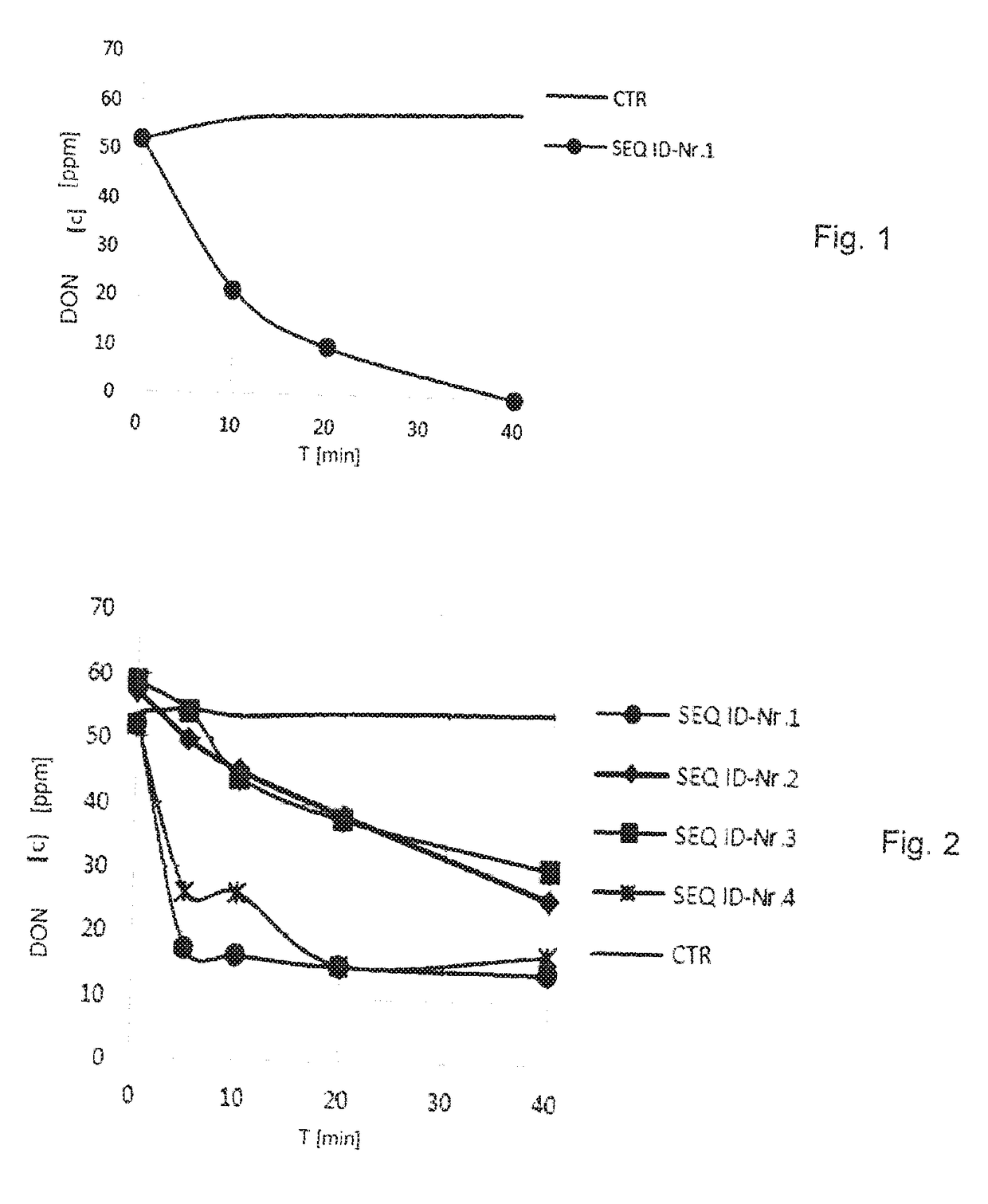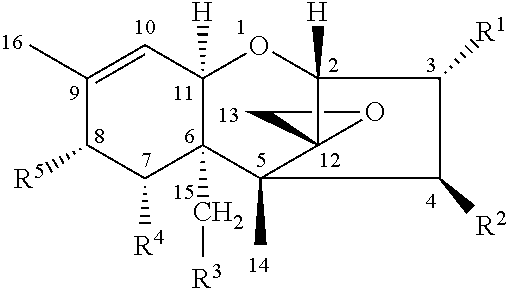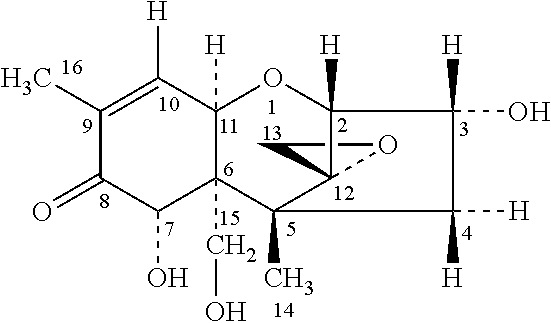Trichothecene-transforming alcohol dehydrogenase, method for transforming trichothecenes and trichothecene-transforming additive
a technology of alcohol dehydrogenase and trichothecenes, which is applied in the direction of peptide/protein ingredients, biochemistry apparatus and processes, enzymology, etc., can solve the problems of non-effective use of other mycotoxins, especially trichothecenes, and ineffective use of trichothecenes, etc., to achieve fast and complete, increase the temperature stability of alcohol dehydrogenases, and maintain the effect of health
- Summary
- Abstract
- Description
- Claims
- Application Information
AI Technical Summary
Benefits of technology
Problems solved by technology
Method used
Image
Examples
example 1
f the Genes and Purification of the Alcohol Dehydrogenase
[0049]The codon-optimised nucleotide sequences of the alcohol dehydrogenase of SEQ ID numbers 1 to 4 for the respective host cell were taken from DNA2.0 and contained restriction sites at the nucleic acid level on the 5′ end and on the 3′ end of the sequence, and at the amino acid level, additionally a C- or N-terminal 6×His tag. These nucleotide sequences were integrated by means of standard methods in expression vectors for the expression in Escherichia coli or Komagataella pastoris, and transformed to E. coli or K. pastoris, and expressed in E. coli or K. pastoris (J. M. Cregg, Pichia Protocols, second Edition, ISBN-10: 1588294293, 2007; J. Sambrook et al. 2012, Molecular Cloning, A Laboratory Manual 4th Edition, Cold Spring Harbor).
[0050]The alcohol dehydrogenases with SEQ ID numbers 1 to 4 were selectively fortified chromatographically from cell lysates in the case of the expression in E. coli and from the intercellular e...
example 2
tion of the Sequence Identity
[0051]The percent sequence identity over the entire length of the amino acid sequence of the alcohol dehydrogenases with SEQ ID numbers 1-4 relative to each other was determined using the BLAST program (Basic Local Alignment Search Tool), especially BLASTP, which is available for use on the homepage of the National Center for Biotechnology Information (NCBI; http: / / www.ncbi.nlm.nih.gov / ), with which it is possible to compare two or more sequences with each other according to the algorithm by Altschul et al., 1997 (Nucleic Acids Res. (1997) 25:3389-3402). The basic settings were used as program settings, especially: “max target sequence”=100; “expected threshold”=10; “word size”=3; “matrix”=BLOSOM62; “gap costs”=“existence: 11; extension: 1”; “computational adjustment”=“conditional compositional score matrix adjustment”. The percentage identities of the amino acid sequences to one another are shown in Table 1:
TABLE 1SEQ IDSEQ IDSEQ IDSEQ IDno. 1no. 2no. 3...
example 3
ation of Trichothecene Exhibiting a Hydroxyl Group on the C-3 Atom
[0052]To determine their suitability to transform trichothecenes that exhibit a hydroxyl group on the C-3 atom, especially DON, nivalenol and T-2 toxin, the alcohol dehydrogenases with SEQ ID numbers 1-4 were produced with a C-terminal 6×His tag in E. coli, as described in Example 1.
[0053]A transformation is then present when the quantity of the trichothecene exhibiting a hydroxyl group on the C-3 atom is reduced by bringing it into contact with an activated alcohol dehydrogenase, i.e., an alcohol dehydrogenase that contains metal ions and a quinone cofactor.
[0054]In each case, 100 ml of an E. coli culture with an optical density (OD600 nm) of 2.0-2.5 were harvested by centrifugation at 4° C. and resuspended in 20 ml potassium phosphate buffer. The cell suspensions were lysed by French press treatment 3 times at 20,000 psi. The cell lysates were separated into soluble and insoluble parts by centrifugation. The superna...
PUM
| Property | Measurement | Unit |
|---|---|---|
| temperature | aaaaa | aaaaa |
| temperature | aaaaa | aaaaa |
| residual humidity | aaaaa | aaaaa |
Abstract
Description
Claims
Application Information
 Login to View More
Login to View More - R&D
- Intellectual Property
- Life Sciences
- Materials
- Tech Scout
- Unparalleled Data Quality
- Higher Quality Content
- 60% Fewer Hallucinations
Browse by: Latest US Patents, China's latest patents, Technical Efficacy Thesaurus, Application Domain, Technology Topic, Popular Technical Reports.
© 2025 PatSnap. All rights reserved.Legal|Privacy policy|Modern Slavery Act Transparency Statement|Sitemap|About US| Contact US: help@patsnap.com



